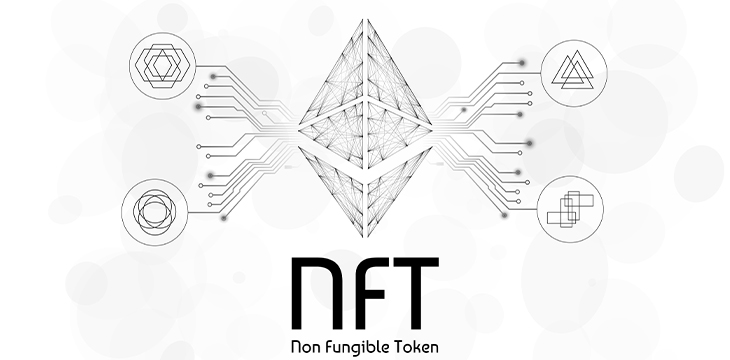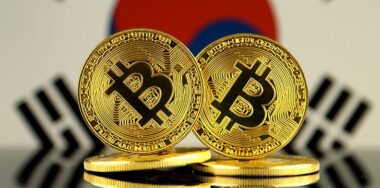2021 may be year of the bubble: BTC has almost doubled in a matter of months, Tesla reached a record high despite missing earnings for four consecutive quarters, and a non fungible token (NFT) based on art by digital artist Beeple sold just sold at auction for US$69.3 million.
There’s room to argue on the true value of BTC or Tesla. However, the hype around NFTs has reached cacophony—NFTs will be a revolution for content creators, democratize art and usher in a new regime of digital ownership from which there will be no return.
However, as more and more NFTs reach ridiculous valuations, it is becoming obvious that the market is almost entirely blind to what an NFT is—and what it is not. Everybody stands to pay the price for this ignorance, from content creators, to NFT purchasers, all the way up to those negligently creating and pumping up digital currency’s latest craze.
What is an NFT?
Firstly, what is meant by ‘non-fungible’? Broadly speaking, something is fungible if it is mutually interchangeable with other identical copies of itself of the same value. For example, a fiat note is fungible: you don’t care which particular dollar bill you have, just the amount it represents. Where the asset is unique, however, it is said to be non-fungible—for example, a car is a non-fungible asset.
A non-fungible token is (in theory) a non-duplicable certificate of ownership for a given digital asset, which could be anything from a picture file to a social media post. The token is minted from a set of inputs—details as to the owner and the metadata associated with the asset—to create a token that is uniquely tied to the original asset. That is written to whatever blockchain ledger is being used by the relevant NFT authority and remains as ‘proof’—supposedly of ownership, but there appears to be much confusion around exactly what an NFT proves.
What this is supposed to mean is that it can give teeth to ownership claims over both physical and digital assets, including those to which it can be difficult to attribute ownership and authenticity. Consider a physical painting in an art collection: there is nothing intrinsic to the painting which can identify its ownership history, and an expert art authenticator would be required to tell if the piece is genuine. Digital assets—such as digital art—pose different problems; files can be copied infinitely, almost erasing the line between the original file and the subsequent copies.
What is an NFT really?
Contrary to what the buzz would suggest, an NFT does not necessarily (or even usually) grant any rights to the underlying asset itself. You own the NFT (or rather, the key to the NFT), which itself will contain a reference to the source asset, but doesn’t need to be tied to that asset in any way.
Here, we stumble upon a fundamental disconnect between the marketing of NFTs and the reality of what they offer. A plain reading of materials put out by NFT projects will give a vague impression of what the purchaser is entitled to at best and an outright misleading one at worst.
For example, NBA Top Shot, the NBA’s NFT initiative, invites fans to “own the best moments from NBA history” by purchasing NFTs tied to specific NBA video highlights. The appropriateness of the term ‘own’ is tested immediately, when you notice that the NBA issues many NFTs linked with a single highlight. The term is stretched even further when you read the license terms and conditions, which make clear that purchase of an NFT does not allow the user to commercialize, modify, display or use the highlight in any other form of media. Here, the purchase is for an NFT, which happens to—in part—be constituted with reference to a video highlight.
One gets a similar impression from the more general digital art craze, typified by the $69 million sale of a collection of art by popular artist Beeple. Christie’s, the auction company in charge of the Beeple sale, incorporates the following terms into its conditions for sale:
You acknowledge that ownership of an NFT carries no rights, express or implied, other than property rights for the lot (specifically, digital artwork tokenized by the NFT)
In other words, your purchase of the token gives you no rights to the art it points to—and yet it was under these conditions that somebody paid tens of millions of dollars for an NFT (albeit, somewhat dubiously in the case of the Beeple sale.
The best illustration might be that there is nothing physically stopping somebody from minting an NFT based on art they do not own and then selling the NFT on to somebody else—probably somebody who thinks they are being granted rights over the art itself—even exclusive rights, akin to owning an original painting. This can be done even where an NFT has already been created for that piece. Twitter is replete with artists who have been dismayed to find their art has been tokenized without their consent.
NFTs can offer users the worst of both worlds
Generally, the copyright in a piece of art rests with the artist, even if the original piece (for example, the painting) is sold on.
Famous photographer William Eggleston was sued by a collector, Sobel, who had purchased original photographs from the creator, after Eggleston went on to issue reprints of the photographs in question, thereby decreasing the value of the original. The court ruled that although both the limited edition photographs purchased by Sobel and the reprints later issued by Eggleston were from the same image, they were produced using a new digital process and therefore created a new body of work.
This makes intuitive sense in the case of physical art. A painting is distinct from copies made of it, with the original attached to particular historical and cultural value distinct from the artistic value of any subsequent copies.
However, in the case of a person purchasing an NFT of digital art, they get the worst of both worlds. The NFT grants no rights over the work itself, yet its value is even more susceptible to the whims of the original copyright holder than a person purchasing a painting might be: copies entirely distinct from the ‘original’ can be made and sold with very little effort from the artist, potentially rendering the value of the NFT useless as more NFTs can be tied to identical yet legitimate copies of the art made by the copyright holder.
Securities risk
To some, the terms used to describe NFTs will be quite familiar—a product that is related to yet distinct from some other underlying asset would typically be something associated with securities, a type of financial asset the offering and dealing of which is highly regulated.
Where something is a security or not depends on an analysis of the substance of the asset rather than the way in which it is marketed. Purely collectible NFTs are unlikely to qualify as a security under the Howey line of cases, but where the issuer is controlling and promoting the secondary market for the NFT, it is more likely to be considered a securities offering.
The NBA Top Shot service seems to run very close to this, with the issuer managing scarcity (by varying the number of NFTs associated with a particular video highlight) and promoting the tradeable value of the NFTs on a marketplace which they also control. If the NBA revoked what tenuous connection each token has with its associated highlight—which would also be the likely consequence should the day come where the NBA’s secondary marketplace shuts down – the token would still exist, but it would be worthless.
As NFTs are developed and more bells and whistles are added, the danger of an NFT being considered a security increases. When the smart contracts underpinning the management of NFTs begin to incorporate royalty sharing agreements for use of the work, the case against a securities determination becomes weak indeed.
This is far from an academic question. A determination that a particular NFT constitutes the offering of a security would be catastrophic to a project which has been proceeding on the basis that it is not: the offering of the tokens would be considered an unregistered offering and a breach of securities legislation. What’s more, the standards that must be adhered to in advertising a project are much higher in the case of securities. The aforementioned disconnect between the marketing of these projects and the reality of them will fall under intense scrutiny of the SEC.
Additional risks
The risk of money laundering is inherent to any category of assets where value is highly subjective, as it is with art. In the case of the kinds of things being tokenized as NFTs, this is of even greater concern, where the link between the assets purported value and the asset itself is even more opaque: for example, digital art has no real age and is infinitely replicable.
Just another day in crypto
Fundamentally, the NFT craze is being driven by a misapprehension that purchasing an NFT gives you rights to anything other than the NFT, which itself has a frail at best connection to the underlying asset. This isn’t to say that such a system has no application, but it is highly problematic when companies and individuals are flagrantly misrepresenting what it is they are selling. This misrepresentation compounds the risk that these products may one day be deemed securities, as the marketing of these products is highly unlikely to stand up to any scrutiny by the SEC.
In other words, the NFT craze is par for the course in the digital asset industry.
See also: CoinGeek Live presentation, Smart Contracts & Tokens on Bitcoin SV: Going Mainstream
New to blockchain? Check out CoinGeek’s Blockchain for Beginners section, the ultimate resource guide to learn more about blockchain technology.









